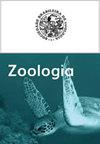Implementation of the QR Code system in the Medical Malacology Collection of the René Rachou Institute, Oswaldo Cruz Foundation
IF 1.8
4区 生物学
Q4 ZOOLOGY
引用次数: 0
Abstract
The Medical Malacology Collection (Fiocruz-CMM) was inaugurated in 1993 and is located at the René Rachou Institute in Fiocruz (Belo Horizonte, MG, Brazil). The collection has about 16,000 limnic mollusks of medical and veterinary importance. Information about each specimen is stored in an electronic Microsoft Excel spreadsheet and is available on the Centro de Referência em Informação Ambiental (CRIA) webpage. A QR Code system was implemented for convenience: it can be printed in reduced format with flexible representation on different surfaces and has a low cost of implantation. A script in PHP language was developed to load the spreadsheet in XLS format using an open-license library, PHP-ExcelReader. A PHP script was created to read and process this spreadsheet line by line and generate individual HTML pages, which were formatted with the Bootstrap tool. Then, the PHP QR code was used to create the images of the QR codes corresponding to each specimen. The QR codes were printed and affixed to the lids of the bottles containing each specimen. Using a device with a camera and internet access, the QR code redirects to the file with the information for each mollusk. The use of QR codes at Fiocruz-CMM facilitates the organization of the collection and allows quick and easy access to information about each specimen.QR码系统在奥斯瓦尔多·克鲁兹基金会ren Rachou研究所医学病理学馆藏中的实施
医学Malacology Collection (Fiocruz- cmm)成立于1993年,位于Fiocruz (Belo Horizonte, MG, Brazil)的ren Rachou研究所。这里收藏了大约16000种具有医学和兽医意义的软体动物。每个标本的信息存储在电子微软Excel电子表格中,并可在Referência em informa o Ambiental (CRIA)网页上查阅。QR码系统的实现是为了方便:它可以以简化的格式打印,在不同的表面上具有灵活的表示,并且植入成本低。利用开放许可库PHP- excelreader,开发了一个PHP脚本,用于加载XLS格式的电子表格。创建了一个PHP脚本来逐行读取和处理这个电子表格,并生成单独的HTML页面,这些页面是用Bootstrap工具格式化的。然后,使用PHP QR码创建每个标本对应的QR码图像。QR码被打印并贴在每个标本的瓶盖上。使用带有摄像头和互联网接入的设备,QR码会重定向到包含每个软体动物信息的文件。在Fiocruz-CMM使用QR码有助于收集的组织,并允许快速方便地访问有关每个标本的信息。
本文章由计算机程序翻译,如有差异,请以英文原文为准。
求助全文
约1分钟内获得全文
求助全文
来源期刊

Zoologia
生物-动物学
自引率
0.00%
发文量
15
期刊介绍:
Zoologia, the scientific journal of the Sociedade Brasileira de Zoologia (SBZ), is an international peer-reviewed, open-access Zoological journal that publishes original research on systematics, evolution, taxonomy, nomenclature, biogeography, morphology, physiology, biology, ecology, symbiosis, conservation, behavior, genetics and allied fields. The journal, formerly known as Revista Brasileira de Zoologia, publishes original articles authored by both members and non-members of the Society. The manuscripts should be written exclusively in English.
 求助内容:
求助内容: 应助结果提醒方式:
应助结果提醒方式:


